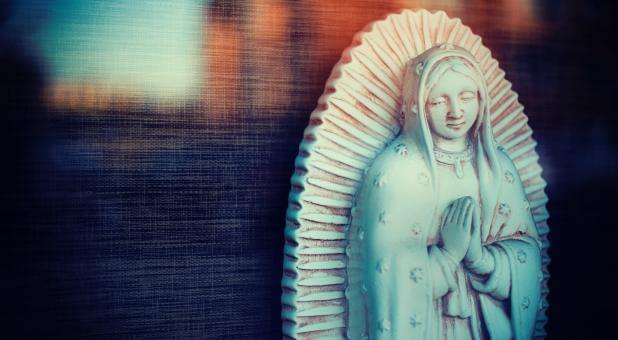Every year between Lent and Resurrection Day, Jezebel’s witchcrafts wreak havoc on believers and unbelievers alike. After Resurrection Day, the spiritual climate clears up—until May.
If you live in a region where false Mary worship is rising, you’ll notice that Jezebel’s witchcrafts rise again in May. That’s because of the traditional May Crowning ritual that takes place to honor the Virgin Mary as “the Queen of May.”
Essentially, this means there is a hyperfocus on devotions to Mary. There are two problems with this. First, Mary doesn’t want or expect our devotion—she wants and expects us to worship the Son of God, Jesus. Second, by treating Mary as an idol we’re empowering the spirit of Jezebel.
Mary Should Not be Worshipped
Although the Bible describes the mother of Jesus as “highly favored” (see Luke 1:28), that doesn’t mean she is supposed to be worshipped. In fact, the Greek word for favored in this verse is charitou. Charitou means grace.
God honored Mary with the blessings and grace and we should respect her as the mother of Jesus but not exalt by crowning her in rituals. We’re supposed to throw our crowns at Jesus’ feet (see Rev. 4:10), not place them on Mary’s head.
This month, you’ll read articles pointing out “5 Reasons to Honor Mary This May” that explain the long-standing tradition to honor the “blessed virgin Mary.” These articles tell of a “May Altar” that “is erected with a statue or picture of Mary, flowers and perhaps candles. The altar stands from May 1-31 as a reminder of Mary’s importance in the life of the Church and in our own lives as well.”
It wasn’t the disciples or apostles—not even John whom Jesus told to care for his mother after His death on the cross (see John 19:27)—who started building altars to Mary. Actually, no one can trace its exact origin. Some say it started with the Greeks, who dedicated May to the goddess of fecundity known as Artemis. The Romans honored Flora, the goddess of blossoms, in May. Apparently, the notion to honor Mary along with these false gods became popular in the Middle Ages.
Catholics are quick to tell you they don’t worship Mary or pray to Mary. But when we build an altar to Mary and adorn it with flowers and candles, are we not exalting Mary to a place that does not belong to her? Are we not worshipping the created instead of the Creator? (see Rom. 1:25).
Who Is the Queen of Heaven?
It’s curious to me that Mary, the mother of Jesus, is so often called the queen of heaven. It’s curious to me because the Bible speaks about the queen of heaven as it relates to idols. Specifically, the queen of heaven in the Bible refers to a goddess that goes by many names, including Isis, Innana, Astarte, Hera and Asherah. As I explain in my book, The Spiritual Warrior’s Guide to Defeating Jezebel, the wicked Queen Jezebel worshipped Asherah.
Jeremiah 7:17-19 warns against making altars to the queen of heaven: “Do you not see what they do in the cities of Judah and in the streets of Jerusalem? The children gather wood, and the fathers kindle the fire, and the women knead their dough, to make cakes to the queen of heaven, and to pour out drink offerings to other gods, that they may provoke Me to anger. Do they provoke Me to anger? says the Lord. Do they not provoke themselves to the shame of their own faces?”
The Bible talks about Jezebel and her witchcrafts (2 Kings 9:22). The spirit of Jezebel is the same as Asherah (also known as Ashtoreth). The Old Testament Jezebel’s father, Ethbal, was the high priest of the goddess Ashtoreth, the queen of heaven. Can you connect the dots? Mary is not the queen of May, but Jesus is the King of kings. If we’re going to build an altar to anyone, it should be to our Lord and Savior, not His earthly mother.
I’ll leave you with this: Witchcraft can cause you to grow weary in well-doing and even faint if you don’t know what you are dealing with—and how to battle it. So, how do you battle it? You battle witchcraft the way you battle every other principality, power, ruler of the darkness of this age or spiritual host of wickedness (Eph. 6:12).











































